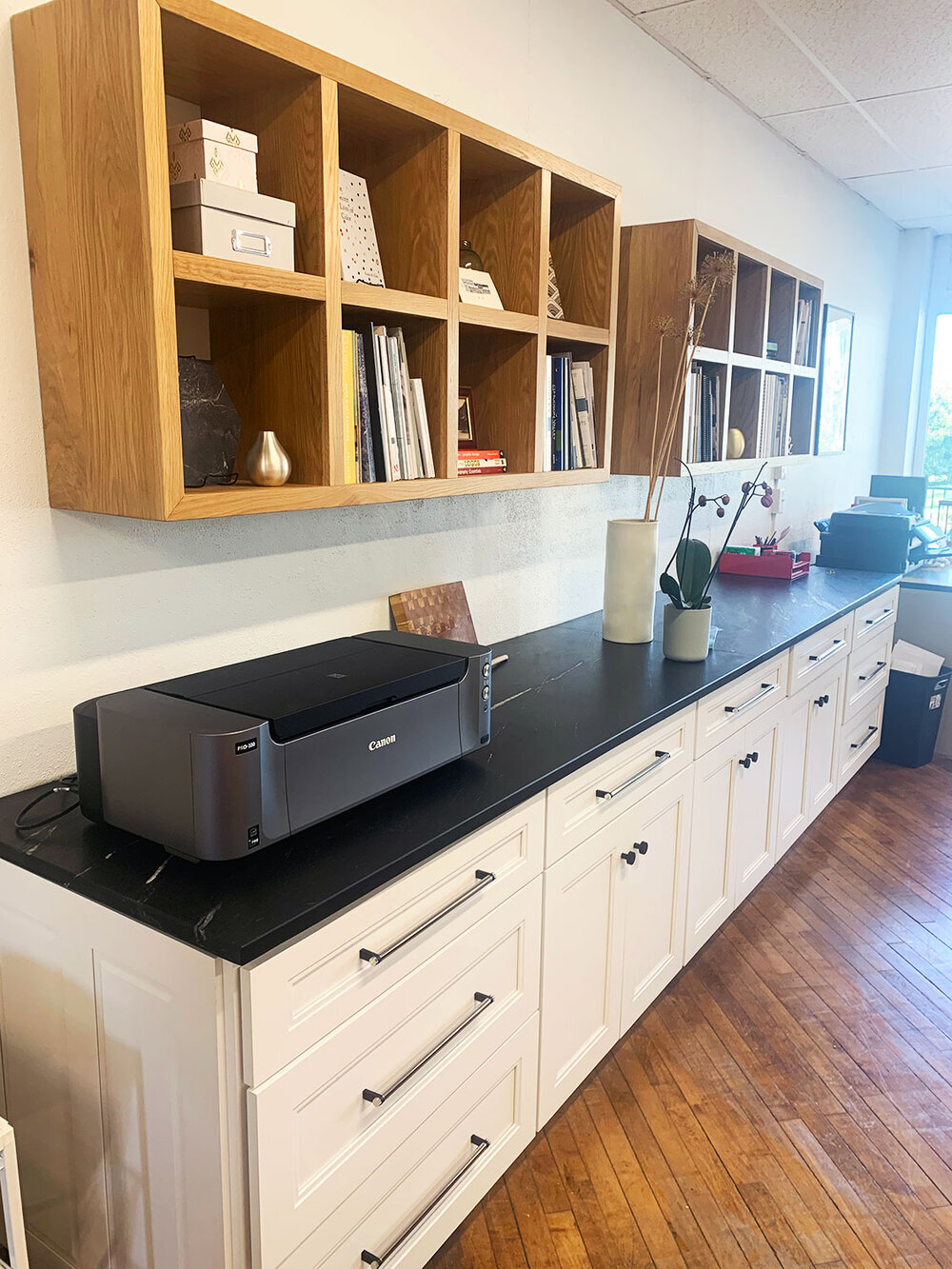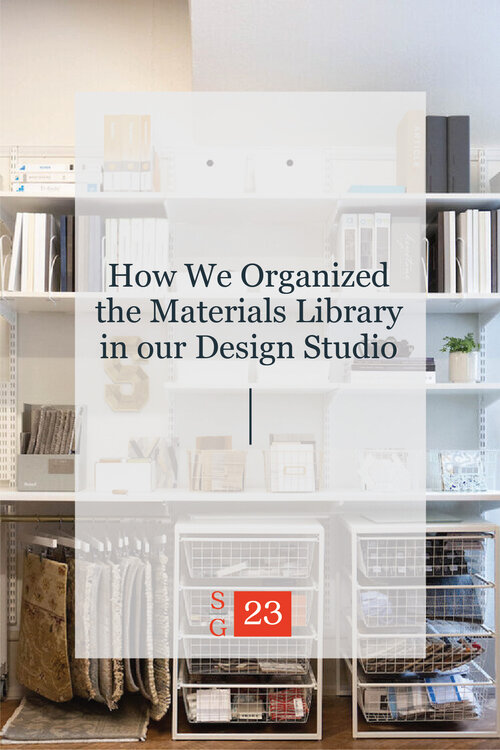How We Organized the Materials Library in Our Interior Design Studio
You wouldn't believe how much space interior designers use. The aesthetic elements of our profession are very much based in color and texture which homeowners and business owners like to see in person. You can’t always trust how materials and finishes come across online. We have a lot of drawing sets, books, binders, large scale printers, computers and of course, there's all the samples. Some of our material and finish samples include fabrics, cabinetry, hardware, carpets, rugs, countertops and tile. We design residential and commercial interiors so that means we have even more samples.
One of the reasons I stopped working from home and moved into a separate design studio is because all the samples were taking over the entire first floor of my home. The clutter alone was the root of a lot of stress. Our studio is organized so that we have samples in the front main space of our studio, with additional samples in the back room.
If you’ve ever worked with my team and I, you know that we love organization. It helps us work on projects more efficiently, which leads to our projects staying on schedule. This meant that we needed to focus on three major things as we continued to develop our materials library.
Curation
We try to only order samples as we need them, unless there’s a product that we feel will fit an ideal client’s aesthetic at some point. We do that for several reasons.
Samples are expensive. Most of our vendors provide samples for free, so it’s definitely an investment on their end and we want to be respectful of that.
We try to be sustainable and avoid throwing away samples that become discontinued or no longer work for our client base.
Space! The size of our studio isn’t finite, so we need to be thoughtful about how we use it.
Our samples are definitely grouped together so that we’re not running all over the studio searching for something particular. For example, our residential and commercial fabrics are grouped separately, by manufacturer then by color. Something like our commercial carpet books are organized by manufacturer, so that reps can easily update our library and pull anything that’s been discontinued.
Organization
This also led to us having different types of storage. We have traditional kitchen cabinetry by Hart & Sapp in the front room and in the back room we have an Elfa system that provides a ton of flexibility. The samples on this shelving are stored in either open or closed bins, wire drawers and our rug samples are hanging on a rod. Something like our cabinet door samples sit neatly on these shelves as well.
Accessibility
When you’re in the middle of a meeting with a client that needs to see an alternate material sample, the last thing you want to do is dig through a ton of boxes. We’re about efficiency and if we can’t get to a sample easily it can throw off a meeting with a client. We tackled this in several ways.
First, the sample storage areas in our studio are divided into two major areas for the most part—residential and commercial. Commercial materials and finishes are subject to many more codes and regulations than residential materials because there are typically more people at a time in the space.
Most of our sample books are in the backroom—especially commercial carpet books. We typically use our carpet books as references and order larger samples of colorways to present at meetings.
We also have the samples we use a bit less often in the back room.
Our material and selection process is pretty streamlined at this point. A big part of that is our thoughtful organization system. Systems help us keep our clients and vendors happy. Whether it’s in your home or business, anything that you can systemize will make your life so much easier so you can focus on other tasks.








